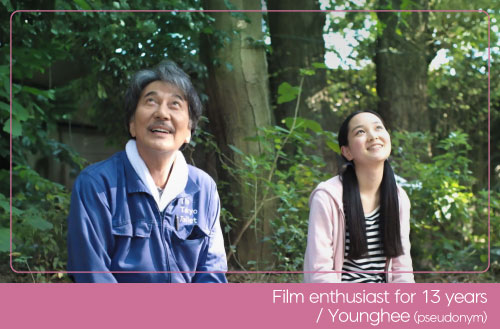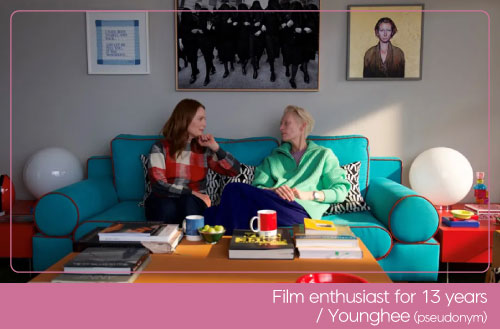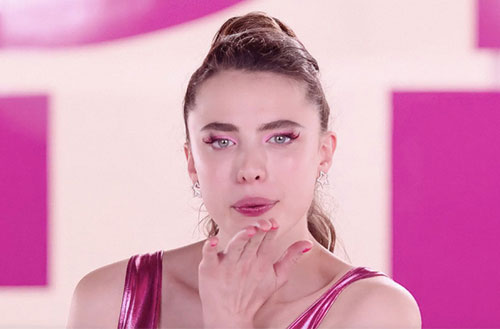
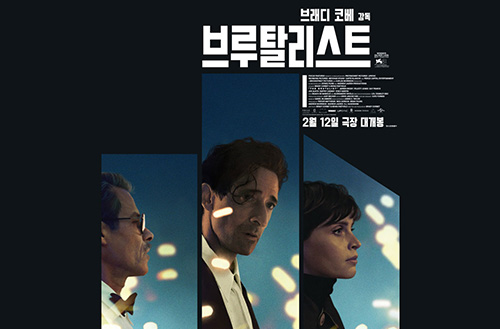
-
-
- 메일 공유
-
https://stories.amorepacific.com/en/amorepacific-the-brutalist-on-beauty-created-by-ordinary-people-in-reality
[The Brutalist] On Beauty Created by Ordinary People in Reality
#2. Series on Diverse Beauty Stories in Film

Columnist Younghee (pseudonym)
Editor’s note
Do you enjoy going to the movies? While OTT platforms have become mainstream these days, I still prefer watching good films in theaters. For me, cinema is a complex spatial experience where you feel both the silence and the collective gasps of the audience. Today, I’d like to introduce just such a film—one that truly shines when experienced in a theater.
Over the next six months, I will share my personally interpreted reviews of recent award-winning films from major international film festivals, hoping to convey the depth and emotion that films possess. I invite you to join me on this journey as I begin the second story.
※ Since this review discusses key scenes essential to the film, I don’t recommend a thorough reading for those sensitive to spoilers. Please note that all film interpretations are my personal opinions.
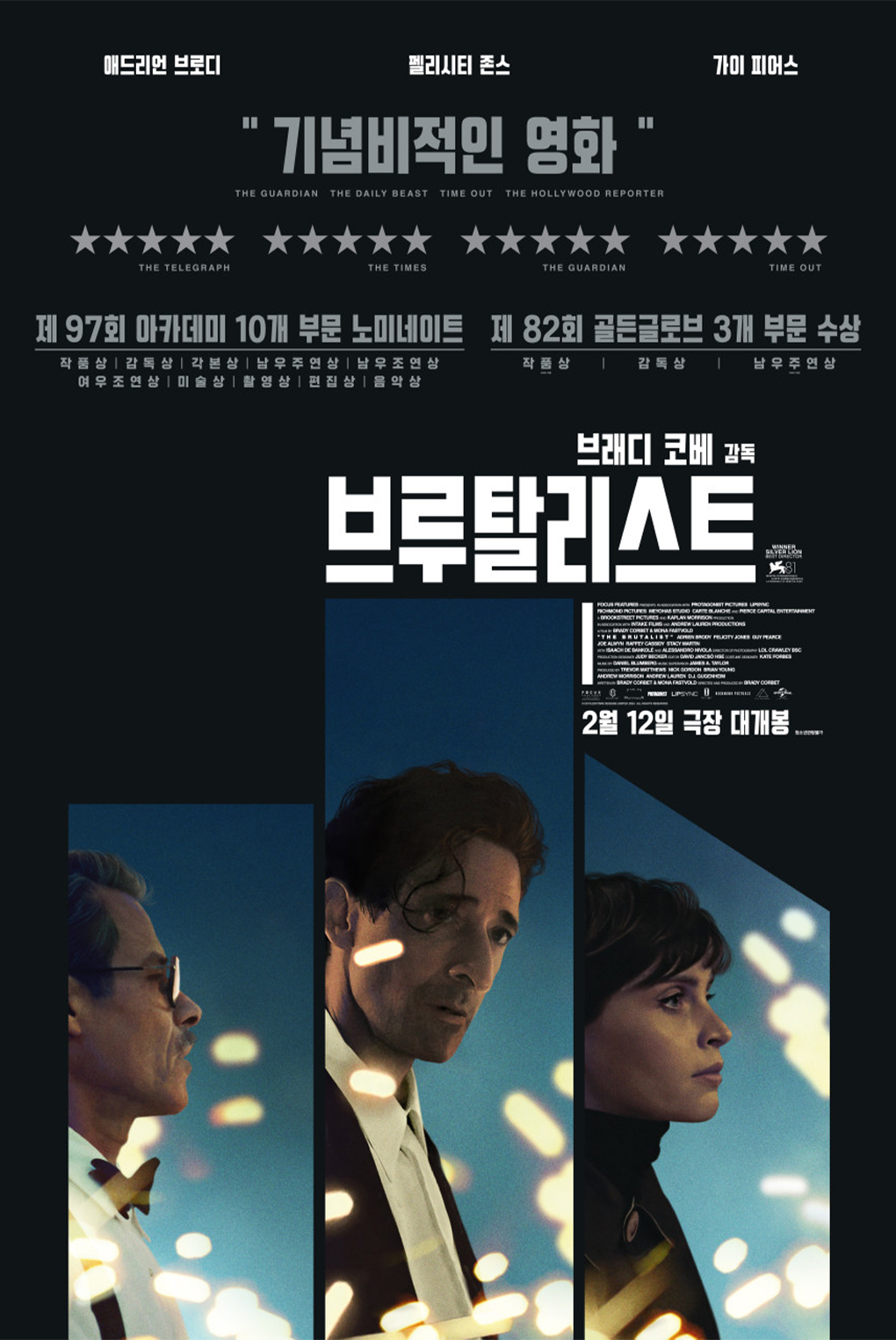
The Brutalist poster (Importer – UPI Korea, Distributor – Universal Pictures Korea)
#INTRO
The film I’m introducing today is ‘The Brutalist,’ which won Best Actor, Best Cinematography, and Best Original Score at the 2025 Academy Awards. Perhaps because I was already aware of these accolades, I found myself paying even closer attention to the music than usual. The Brutalist also generated buzz for its use of AI technology. Despite using AI to naturally correct Adrien Brody’s Hungarian pronunciation as he played an immigrant character, Brody still won the Best Actor award, sparking controversy about eligibility for acting awards. Should we accept AI tool usage as part of our times? Or does it infringe upon an actor’s unique expressiveness? What do you think?
1 Film Introduction and the First Half
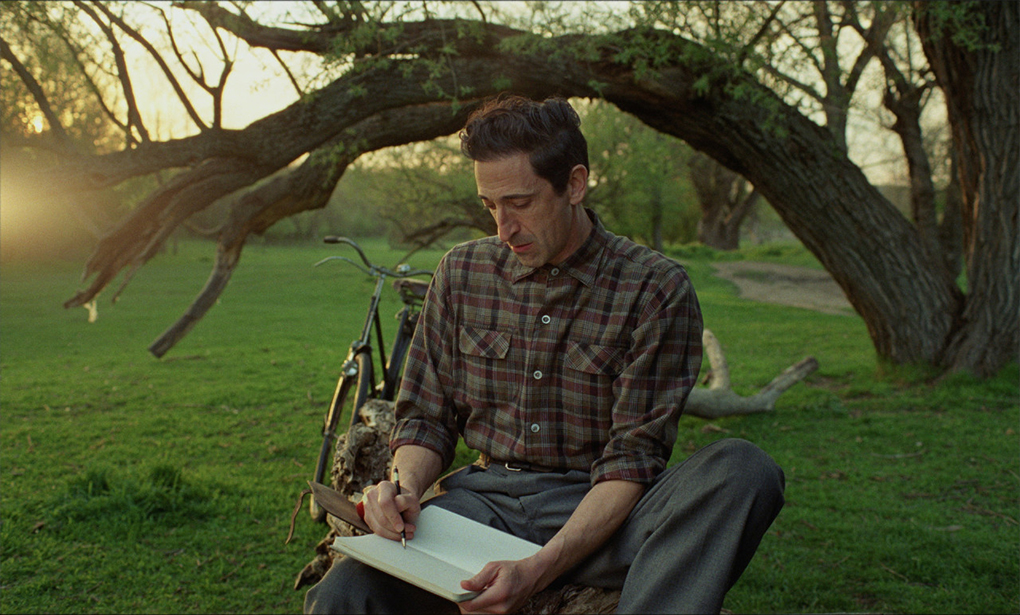
The Brutalist still (Importer – UPI Korea, Distributor – Universal Pictures Korea)
The Brutalist depicts the hardships and resilience of Jewish protagonist László Tóth, who flees fascism in Hungary during World War II to immigrate to the United States. László was a highly educated man who had gained recognition as an architect in his homeland, but in America, he’s merely an immigrant laborer with poor English pronunciation. He finds work at his cousin’s furniture store, having arrived in America earlier, but this arrangement doesn’t last long. His cousin has been changing his name and even the store’s sign to American versions, denying his roots and assimilating into American culture. Eventually, the cousin’s wife, who disapproves of the outsider László, creates discord, leading to his estrangement from his cousin and the loss of his job.
Subsequently, László stays at a public shelter for the homeless while earning a living as a day laborer on construction sites. He maintains steady correspondence with his wife, Erzsébet, and his cousin’s daughter, Zsófia, who are somewhere along Europe’s borders, trying to reach America. For a day laborer on construction sites, reuniting with his distant family seems like a remote possibility.
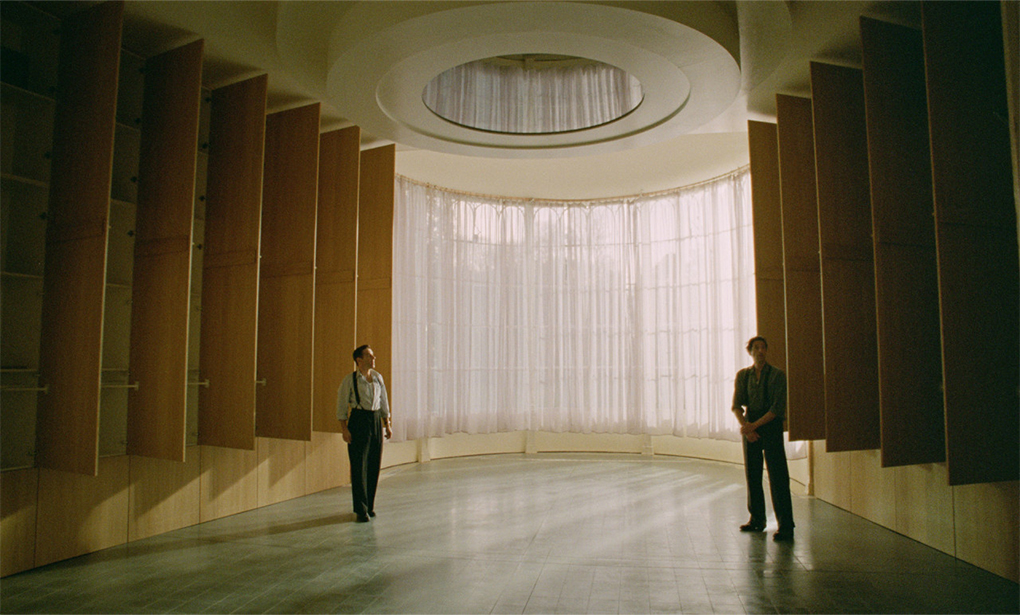
The Brutalist still (Importer – UPI Korea, Distributor – Universal Pictures Korea)
Then he encounters wealthy capitalist Harrison Lee Van Buren, someone from his past. Previously, when László was with his cousin, he had remodeled Harrison’s study but was driven away without compensation. However, that study eventually gained popularity and emerged as an icon of modern architecture. Recognizing László’s genius, Harrison—a symbol of American capitalism—personally sought him out to design a building commemorating his mother.
With Harrison’s help, László reunites with his family, and the first half ends on a high note, with expectations soaring that his architectural talents will finally flourish.
2 The Dramatic Turn Created by Intermission and the Second Half

The Brutalist Intermission (Importer – UPI Korea, Distributor – Universal Pictures Korea)
Immediately after the first half ends, a 15-minute intermission begins. A countdown timer appears against the backdrop of László and Erzsébet’s wedding photo, the theater lights come up brightly, and the audience has time to visit the restroom. This was my first experience with an intermission in a film, and I felt it was truly the right choice to watch the film in a theater. The first half ends on a hopeful note, but the second half thoroughly betrays audience expectations, making the intermission serve as a device that powerfully amplifies this dramatic contrast.
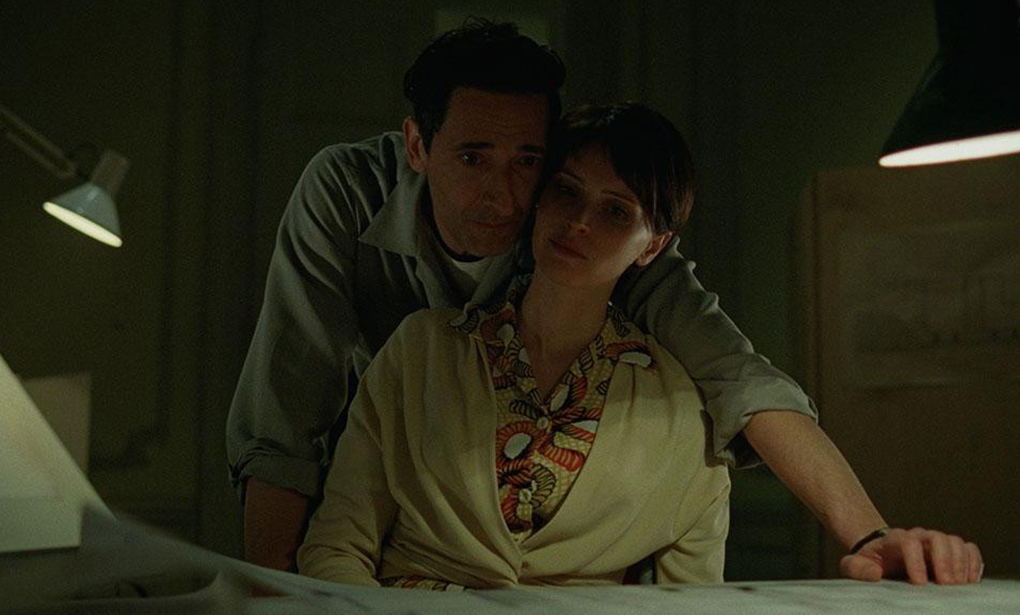
The Brutalist still (Importer – UPI Korea, Distributor – Universal Pictures Korea)
His wife Erzsébet and Zsófia finally arrive in America, and László reunites with his family. Thanks to Harrison, his career also seems to be resuming. However, László gradually suffers and declines under company politics and exploitation. As construction halts due to a train accident and Harrison’s violent nature is revealed, the film takes increasingly unpredictable turns.
We generally expect that a protagonist who is talented and cherishes his family despite difficult circumstances would also possess admirable character. But László repeatedly engages in shameful behaviors—prostitution, pickpocketing, drugs—revealing himself to be not a saint at all, but a fragile, fallible, ordinary human being.
3 The Epilogue and Art’s Sublimity Etched on Screen
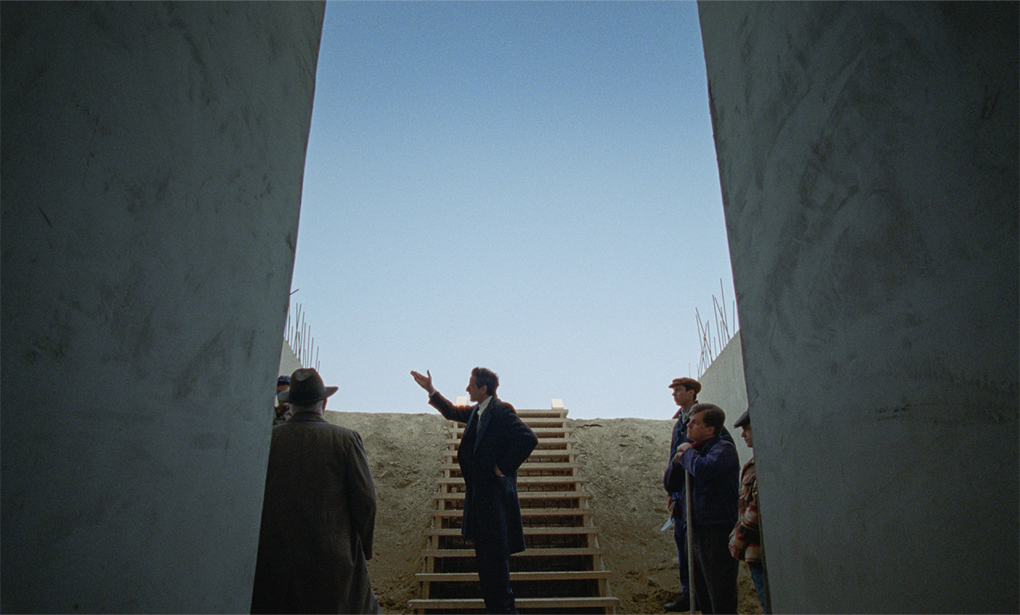
The Brutalist still (Importer – UPI Korea, Distributor – Universal Pictures Korea)
Nevertheless, László obsesses over his work—the construction of the ‘Van Buren Center.’ His wounded wife and niece eventually leave America to start new lives in Israel, but László remains in America, absorbed in his work. His creation, which had aroused curiosity throughout the film by showing only fragments of the building, finally appears in its complete form in the film’s latter half.
The film’s twist is completed in the briefest epilogue. Decades later, in the 1980s, at the first Architecture Biennale, the person giving a speech in honor of László’s work, in place of the ailing architect, is none other than his niece, Zsófia. But she interprets the buildings in a completely unexpected manner. Her speech includes references to László drawing inspiration from prisons where Jews were confined during the Holocaust—yet no such context was ever revealed in the film.
Just as the audience feels bewildered by this sense that the long journey following László’s sincerity has somehow gone awry, the film ends. But upon reflection, I believe this moment contains the valid message of ‘The Brutalist.’ The moment art leaves the creator’s hands, it inevitably becomes layered with countless interpretations and misunderstandings. And even after going through all these processes, the resulting work can still genuinely resonate with someone.
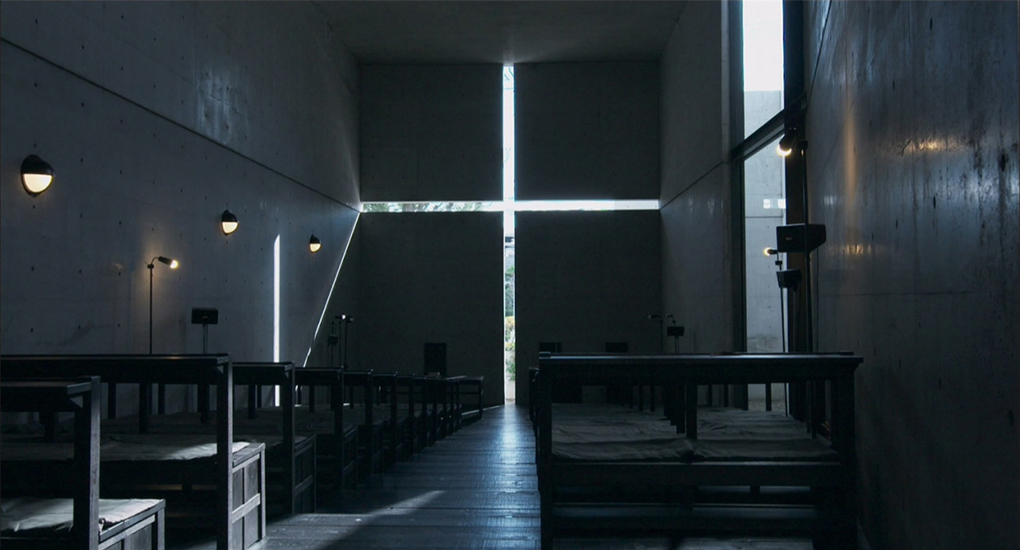
Film Tadao Ando still (Import – Lara Abyss, Distribution co-provided – Jinjin Film Company)
Brutalism was an architectural movement that developed primarily during the post-war reconstruction period of the 1950s to 1970s, utilizing raw concrete and exposed structures as its architectural language. The ‘Van Buren Center’ in the film is a space created in the style of Brutalism, and the completed building’s grandeur and materiality directly reflect and display László’s obsession and solitude as an artist.
This architecture, realized through the contrast of light and concrete, evokes Tadao Ando’s ‘Church of Light,’ a representative work by the renowned Brutalist architect, providing audiences with an intense visual experience. The film’s message—that art sometimes becomes distorted and misunderstood, yet still leaves behind a sense of sublimity—seems to resonate more deeply when encountered on the big screen. This is also why I’d recommend watching the film in a quiet theater.
#OUTRO
I see ‘The Brutalist’ as a film that explores the relationship between art and humanity, neither a grand, heroic narrative nor an exposé of absurdity. It shows how one artist’s sincerity, as he quietly lives his life, becomes alienated, distorted, and ultimately endures.
Reality is repetitive and ordinary, sometimes painfully so. And most of us are ordinary people living within such conditions. However, I believe that anything created with a genuine heart within that reality can become art. Product names and marketing plans conceived after much deliberation, food lovingly prepared for family, the process of raising a child with love... all of these can become works of art if they stem from sincerity.
✍ One-line review of The Brutalist: Even weary daily life becomes beautiful when you put your heart into it.
-
Like
0 -
Recommend
0 -
Thumbs up
0 -
Supporting
0 -
Want follow-up article
0



